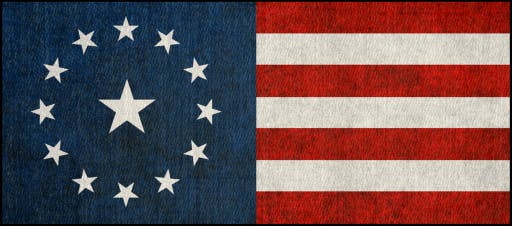
Introduction
The Magna Carta, or “Great Charter,” signed in 1215 by King John of England under pressure from rebel barons, stands as one of the most foundational documents in the development of constitutional governance. Though a medieval English document, its principles have transcended time and geography, influencing the development of modern democratic institutions, particularly in the United States. The U.S. Constitution—adopted in 1787 as the supreme law of the land—reflects many of the core ideas established in the Magna Carta, especially concerning individual rights, the rule of law, and limitations on government power. This report explores the historical context of the Magna Carta, its key principles, and how it directly and indirectly shaped the Constitution of the United States.
Clause # (52) To any man whom we have deprived or dispossessed of lands, castles, liberties, or rights, without the lawful judgement of his equals, we will at once restore these. In cases of dispute the matter shall be resolved by the judgement of the twenty-five barons referred to below in the clause for securing the peace (§ 61). In cases, however, where a man was deprived or dispossessed of something without the lawful judgement of his equals by our father King Henry or our brother King Richard, and it remains in our hands or is held by others under our warranty, we shall have respite for the period commonly allowed to Crusaders, unless a lawsuit had been begun, or an enquiry had been made at our order, before we took the Cross as a Crusader. On our return from the Crusade, or if we abandon it, we will at once render justice in full.
Clause # (61) SINCE WE HAVE GRANTED ALL THESE THINGS for God, for the better ordering of our kingdom, and to allay the discord that has arisen between us and our barons, and since we desire that they shall be enjoyed in their entirety, with lasting strength, for ever, we give and grant to the barons the following security:
The barons shall elect twenty-five of their number to keep, and cause to be observed with all their might, the peace and liberties granted and confirmed to them by this charter.
If we, our chief justice, our officials, or any of our servants offend in any respect against any man, or transgress any of the articles of the peace or of this security, and the offence is made known to four of the said twenty-five barons, they shall come to us - or in our absence from the kingdom to the chief justice - to declare it and claim immediate redress. If we, or in our absence abroad the chiefjustice, make no redress within forty days, reckoning from the day on which the offence was declared to us or to him, the four barons shall refer the matter to the rest of the twenty-five barons, who may distrain upon and assail us in every way possible, with the support of the whole community of the land, by seizing our castles, lands, possessions, or anything else saving only our own person and those of the queen and our children, until they have secured such redress as they have determined upon. Having secured the redress, they may then resume their normal obedience to us.
Any man who so desires may take an oath to obey the commands of the twenty-five barons for the achievement of these ends, and to join with them in assailing us to the utmost of his power. We give public and free permission to take this oath to any man who so desires, and at no time will we prohibit any man from taking it. Indeed, we will compel any of our subjects who are unwilling to take it to swear it at our command.
If-one of the twenty-five barons dies or leaves the country, or is prevented in any other way from discharging his duties, the rest of them shall choose another baron in his place, at their discretion, who shall be duly sworn in as they were.
In the event of disagreement among the twenty-five barons on any matter referred to them for decision, the verdict of the majority present shall have the same validity as a unanimous verdict of the whole twenty-five, whether these were all present or some of those summoned were unwilling or unable to appear.
The twenty-five barons shall swear to obey all the above articles faithfully, and shall cause them to be obeyed by others to the best of their power.
We will not seek to procure from anyone, either by our own efforts or those of a third party, anything by which any part of these concessions or liberties might be revoked or diminished. Should such a thing be procured, it shall be null and void and we will at no time make use of it, either ourselves or through a third party.
I. Historical Context and Creation of the Magna Carta
In the early 13th century, England was ruled by King John, whose heavy taxation, arbitrary justice, military failures, and disputes with the Church created widespread dissatisfaction among the nobility and common people. In response, a group of barons forced the king to agree to a charter of liberties, drafted at Runnymede on June 15, 1215. Though the original Magna Carta was annulled by Pope Innocent III shortly after its signing, it was reissued multiple times in the 13th century by subsequent monarchs, gradually becoming a symbolic cornerstone of English liberty and law.
The Magna Carta contained 63 clauses, many of which were specific to feudal practices, but certain clauses laid the groundwork for broader legal principles that would endure. Among these was the revolutionary idea that even the king was subject to the law—a radical notion for its time.
II. Foundational Principles of the Magna Carta
Several key principles embedded in the Magna Carta would go on to influence centuries of legal development:
Rule of Law: The Magna Carta asserted that the king could not rule arbitrarily. Clause 39 famously declared:
"No free man shall be seized or imprisoned... except by the lawful judgment of his equals or by the law of the land."Due Process: The concept that individuals have the right to fair legal procedures became a central theme, evolving into the modern right to due process as found in the Fifth and Fourteenth Amendments of the U.S. Constitution.
Trial by Jury: Although the term “jury” is not used in the Magna Carta, the reference to “lawful judgment of his equals” prefigures the right to a trial by jury—later enshrined in the Sixth and Seventh Amendments.
Taxation by Consent: The Charter insisted that taxation required the consent of the kingdom’s leading subjects, a principle that grew into the modern democratic idea of “no taxation without representation.”
Limitation of Power: The Charter imposed limits on the monarch’s power, setting a precedent for constitutional checks and balances.
III. The Magna Carta’s Influence on English Law and Political Philosophy
The Magna Carta’s legacy grew in the centuries following its creation, particularly during times of political conflict. English jurists like Sir Edward Coke in the 17th century treated the Magna Carta not merely as a feudal document but as a symbol of ancient constitutional rights. Coke cited the Magna Carta in arguments against the absolutism of the Stuart monarchy and as a defense of common law rights against royal overreach.
This legal evolution helped shape English constitutional traditions, such as parliamentary supremacy, habeas corpus, and the protection of individual liberties—all of which would deeply influence American political thinkers.
IV. Transmission to the American Colonies
English settlers in the American colonies brought with them the legal traditions rooted in the Magna Carta. Colonial charters, legislative assemblies, and early constitutions echoed its principles. For instance, the Virginia Charter of 1606 promised colonists "all liberties... as if they had been abiding and born within this our Realm of England."
As tensions between the colonies and the British Crown escalated in the 18th century, colonists increasingly invoked Magna Carta principles to justify their resistance. They viewed British violations—such as arbitrary taxation, lack of representation, and denial of due process—as betrayals of their inherited rights.
V. The Magna Carta and the U.S. Constitution
When the Founders drafted the U.S. Constitution in 1787 and the Bill of Rights in 1791, the legacy of the Magna Carta was both implicit and explicit in the legal architecture of the new republic.
Key connections include:
Due Process of Law: The Fifth Amendment guarantees that no person shall be “deprived of life, liberty, or property, without due process of law.” This is a direct descendant of Clause 39 of the Magna Carta.
Habeas Corpus: Article I, Section 9 of the Constitution protects the right to habeas corpus—a legal remedy with roots in the Magna Carta—to challenge unlawful detention.
Trial by Jury: The Sixth and Seventh Amendments enshrine the right to a jury trial in criminal and civil cases, respectively, expanding on the Magna Carta’s idea of judgment by one's peers.
Checks and Balances: The Constitution establishes a government of limited powers and separate branches, reflecting the Magna Carta’s foundational concept of restrained authority.
Taxation and Representation: The Magna Carta’s requirement for consent to taxation evolved into the American doctrine of representative government and legislative control over taxation.
VI. Enduring Symbolism and Modern Relevance
The Magna Carta continues to hold symbolic and jurisprudential significance. It has been cited in numerous U.S. Supreme Court decisions, including Boumediene v. Bush (2008), in which Justice Kennedy referenced the Magna Carta’s legacy in affirming habeas corpus rights for detainees at Guantanamo Bay.
American legal culture frequently honors the Magna Carta as a touchstone of liberty. A 1297 version of the Magna Carta is displayed in the National Archives alongside the Declaration of Independence and Constitution, signifying its enduring role in shaping the American legal and political identity.
Conclusion
The Magna Carta, born out of a feudal crisis in medieval England, blossomed into a universal symbol of liberty and lawful governance. Its core ideas—rule of law, due process, trial by jury, and limitations on sovereign power—deeply influenced the framing of the United States Constitution and the American legal system. Though separated by centuries and geography, the spirit of the Magna Carta lives on in the foundational structures of the American Republic. The Constitution did not simply imitate this ancient charter; it built upon its legacy to create a more comprehensive framework for ordered liberty, rooted in natural law and the consent of the governed.
https://constitutionallawcoalition.com/documents/Magna-Carta-Annotation-Unabridged.pdf


